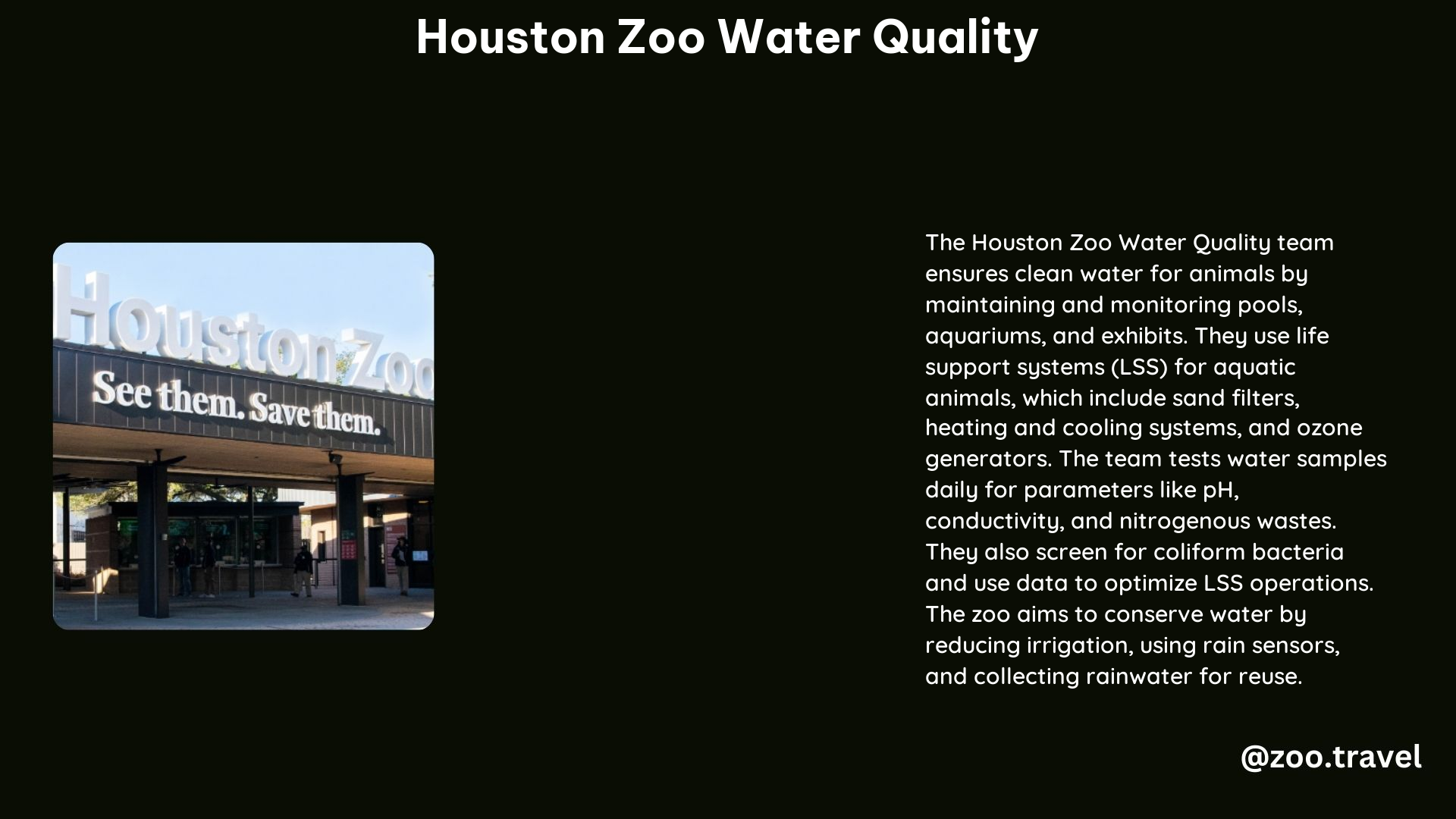The Houston Zoo’s Water Quality department plays a crucial role in maintaining the health and well-being of the animals and ecosystems within the zoo. From testing water samples to adjusting life support systems, this team ensures that all creatures have access to clean, potable water.
Purpose of the Water Quality Department
The Water Quality department is responsible for ensuring that all animals have access to clean, potable water. They achieve this by testing water samples from various exhibits daily, monitoring parameters such as pH, conductivity, hardness, alkalinity, salinity, nitrogenous wastes, phosphate, oxidation/reduction potential, temperature, and chlorine levels. This data is used to adjust the life support systems (LSS) to maintain optimal water quality.
Maintaining Water Quality in Exhibits

The Houston Zoo uses various methods to maintain water quality in its exhibits:
- Life Support Systems (LSS): These systems are designed to remove animal waste, provide gas exchange, heat exchange, and water flow. For example, the LSS for the Pantanal Aquarium includes a sand filter, heating and cooling systems, and a tower for gas exchange and nitrifying bacteria colonies.
- Filtration Systems: The zoo uses filtration systems to remove particles and waste from the water. These systems are designed to be energy-efficient and reduce the zoo’s carbon footprint. For instance, the use of Variable Frequency Drives (VFDs) in pumps helps reduce energy consumption by adjusting pump speed to meet the required water flow.
- Water Testing and Monitoring: The Water Quality team analyzes water samples daily to ensure that all animals have clean water. They test for multiple parameters and use this data to adjust the LSS operations to maintain optimal water quality.
Controlling Algae in Aquatic Systems
The Houston Zoo uses several methods to control algae in its aquatic systems:
- Filtration Systems: The filtration systems mentioned above help remove particles and waste that can contribute to algae growth.
- Water Circulation and Exchange: The zoo ensures proper water circulation and exchange in its exhibits to prevent stagnant water, which can lead to algae growth.
- Water Quality Monitoring: The Water Quality team closely monitors water parameters to detect any changes that could lead to algae growth and takes corrective action accordingly.
Sustainability Efforts
The Houston Zoo has set ambitious sustainability goals, including reducing water usage to not exceed the carrying capacity of its site. To achieve this, they:
- Monitor Water Consumption: The zoo has installed meters to track water usage and identify areas for improvement.
- Use Closed-Loop Systems: They use closed-loop systems with efficient filtration to minimize water waste.
- Detect and Correct Leaks: The zoo regularly checks for leaks and corrects them to prevent water loss.
- Use Low-Flow Fixtures: New buildings are equipped with low-flow fixtures to reduce water usage.
- Native Plantings and Rainwater Harvesting: The zoo uses native plantings, rain sensors, and rainwater harvesting to reduce irrigation water usage.
Additional Details
- Kathrine G. McGovern Texas Wetlands Exhibit: This exhibit features a functional ecosystem with native plants that help maintain water quality and absorb stormwater from surrounding areas.
- Water Quality Team: The team includes experts like Karen Sprague, a Water Quality Tech, who work together to ensure the best environment possible for the animals.
The Houston Zoo’s Water Quality department plays a vital role in maintaining the health and well-being of the animals and ecosystems within the zoo. By testing water samples, adjusting life support systems, and implementing sustainable practices, this team ensures that all creatures have access to clean, potable water.
References
- Houston Zoo. (2020). Water: The Science Beneath the Surface. Retrieved from https://www.houstonzoo.org/blog/water-the-science-beneath-the-surface/
- Houston Zoo. (2021). World Water Day. Retrieved from https://www.houstonzoo.org/blog/world-water-day/
- Houston Zoo. (2017). Conservation, Water Quality Style. Retrieved from https://www.houstonzoo.org/blog/conservation-water-quality-style/
- West Houston. (2023). Houston Zoo – Saving Animals Through Sustainability. Retrieved from https://www.westhouston.org/2023/11/01/houston-zoo-saving-animals-through-sustainability/
- Biohabitats. (n.d.). Houston Zoo: Kathrine G. McGovern Texas Wetlands. Retrieved from https://www.biohabitats.com/project/houston-zoo-texas-wetlands-in-the-heart-of-the-zoo/.
